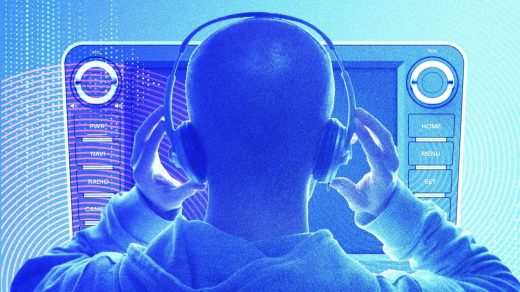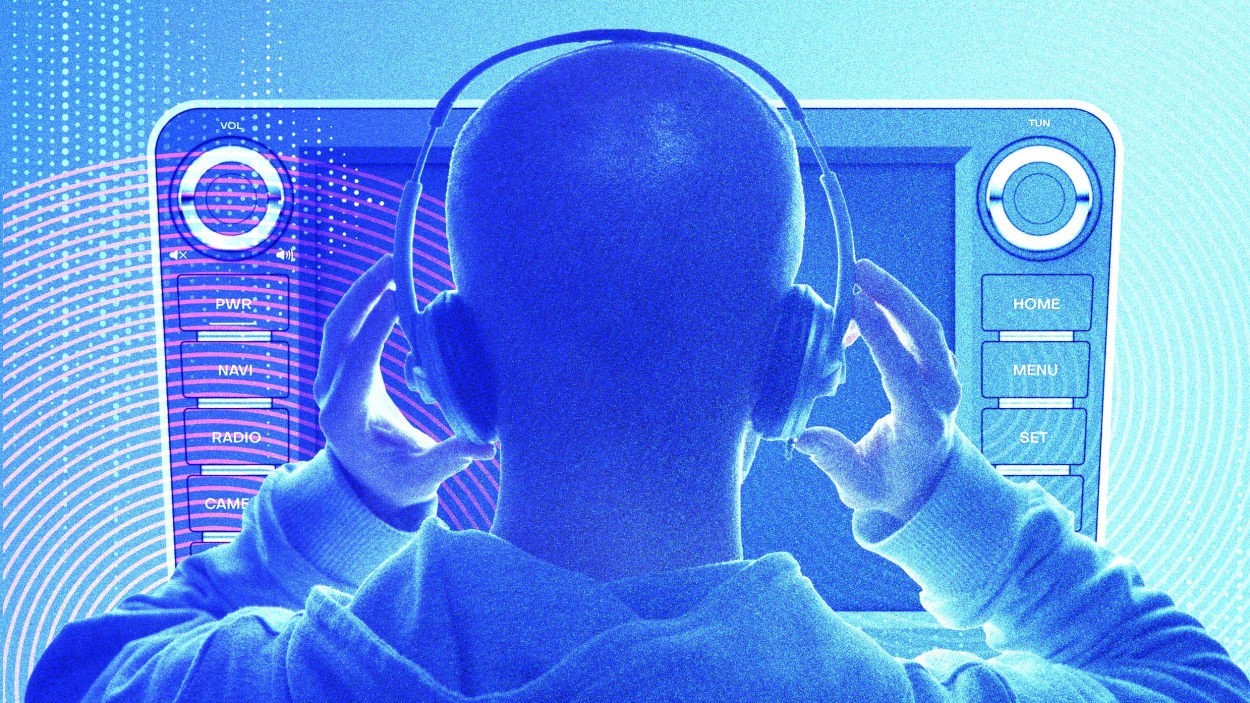Can satellite radio giant SiriusXM get users to tune in outside of their cars?
For about nine years, Joe Inzerillo has been a subscriber to SiriusXM. He signed up when he got a car, and remembers the experience of first listening to the broadcaster’s satellite radio channels.
“[It was] just so much better than anything else out there from a radio standpoint or even, at that time, a streaming standpoint,” he says. Beyond in-car listening, he would listen to SiriusXM on smart speakers and even his phone with the company’s app, which is included in satellite subscriptions. But it wasn’t always a seamless experience. “The one thing that was consistent with my consumption of [SiriusXM] was my complaining about the technical problems with it,” he says.
Like a lot of SiriusXM’s subscribers, Inzerillo knows firsthand some of the platform’s shortcomings. Unlike every other customer, though, he’s able to do something about it. Inzerillo joined SiriusXM in early 2022 as the company’s chief product and technology officer, bringing with him an acute sense of the customer experience, along with a resume building streaming services at Disney—including Disney+ and ESPN+—with ease of use in mind.
He says that SiriusXM finds itself in a similar position to where Disney was in 2017: a company trying to rethink its distribution model with a focus on digital experience. “We have this amazing content, and we have a very, very profitable legacy business of distributing it to cars, but the digital piece of it has always been sort of this thing bolted on the side. It was never designed to be a digital product.”
That’s about to change. Later this year, SiriusXM will unveil and start rolling out an overhauled user experience that includes revamping the in-car service (which includes both traditional satellite radio and 360L, which combines satellite and streaming capabilities in newer vehicles), and relaunching the mobile app.
Inzerillo says it isn’t just the user experience getting redone, but the systems that power it as well. The company is improving content management, ensuring more relevant search results, and adding user profiles akin to video streaming services. The goal is to make the listening experience as effortless as possible, regardless of how you’re tuning in.
“There’s not one smoking gun feature that nobody’s ever see before, but there’s a focus on making a first-class application that stands up against the [other music streamers] in fit, finish, and quality,” he says, noting tweaks to information architecture, graphic design, and how content is delivered. Sports fans, for example, will be able to see specific mentions of their team in recent broadcasts or podcasts and get alerts when a game is live; users searching for an artist can find stations where they’ll likely be played and surface podcasts where they may have appeared. “It’s really about building this foundation that ultimately is revolutionary without feeling like a revolution for our users.”
That revolution, according to industry experts, is long overdue. The SiriusXM app “has really been non-optimal for a surprisingly long period of time,” says Matthew Harrigan, a communications services and media analyst with New York- and Boston-based investment banking firm Benchmark. But streaming has become increasingly critical to the company’s efforts to grow and maintain its audience—which has stalled at around 34 million subscribers since 2020.
On the company’s Q2 conference call in August, CEO Jennifer Witz noted that there’s a higher conversion and retention rate among in-car listeners who also stream with the app. App users are also cheaper to acquire for SiriusXM, and can help improve the company’s revenue per user. As Harrigan explains, with plans that start at $4.99 a month, the company’s streaming-only subscription offers “a lower price point [than satellite ones that include streaming], but is actually a higher-margin business.”
The platform overhaul also offers SiriusXM the opportunity to play up its podcasting prowess and highlight where podcast content might intersect with a listener’s interests. Podcasts produced by the company and in its broader network—including Conan O’Brien Needs a Friend, Office Ladies, and 99% Invisible—are widely popular, but not well integrated into the existing streaming experience. Add to that the fact that SiriusXM recently shut down its Stitcher podcast app, and there’s a lot of potential for drawing in podcast fans with a better integration and selling them on SiriusXM’s broader offerings.
“We’re leaning into podcasts as a first-class feature inside of SiriusXM,” Inzerillo says. “In the past, they were there, but the app was never designed with the types of convenience features that [were] in the Stitcher consumer app.” Though he says the features in the revamped SiriusXM app may not be exactly like Stitcher, he’s been focused on how to create more links between existing radio shows and the company’s roster of podcasts.
Harrigan says that while shuttering Stitcher was likely a cost-cutting effort, the company’s efforts to integrate podcasts into the SiriusXM platform is part of a broader play for younger users. “They’re clearly trying to broaden the content bouquet to draw in a younger demographic,” he says.
SiriusXM has also been tailoring its programming to draw in younger, more diverse users with efforts like pop-up stations curated by the likes of the Jonas Brothers, a new Carrie Underwood Channel, and Hits Uno—a Latin pop channel that debuted concurrent with the opening of its new Miami studio this summer.
All these changes reflect a broader shift in the company as it moves away from simply imitating the experience of listening to radio, Inzerillo says. “When Sirius and XM were two separate companies and getting started, they were fighting each other, but really fighting AM/FM radio. Now, our image competitors are Spotify, Apple Music, Amazon Music, etc.,” he says. “When you just completely reorient, even the folks that have been here for 20 years start to get fire in their eyes again. . . . I don’t want people to look at this product and think that it ever had to be tethered to a car.”
(17)



